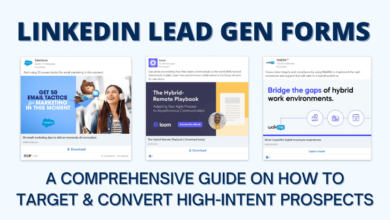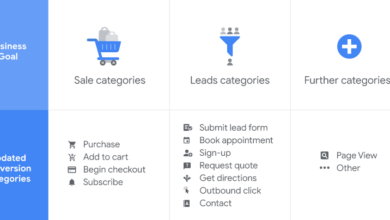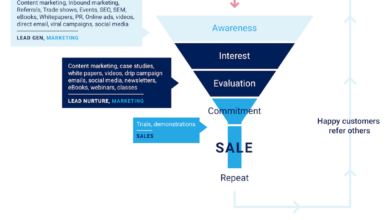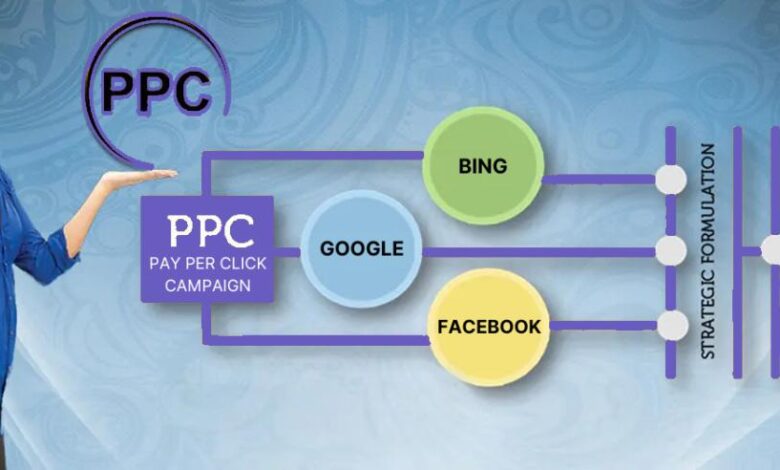
PPC Lead Generation A Comprehensive Guide
PPC lead generation is crucial for driving qualified leads through paid advertising. This comprehensive guide delves into the intricacies of this powerful strategy, exploring everything from campaign structure to advanced targeting techniques. We’ll cover how to optimize your landing pages, manage your budget effectively, and nurture leads post-conversion for maximum impact.
From crafting compelling ad copy to leveraging insightful analytics, this guide provides a practical framework for achieving tangible results with your PPC lead generation campaigns. It’s designed to equip you with the knowledge and tools to turn paid advertising into a profitable lead engine.
Introduction to PPC Lead Generation
PPC lead generation is a powerful digital marketing strategy that uses paid advertising to attract potential customers and convert them into leads. This approach leverages the reach and targeting capabilities of platforms like Google Ads and social media advertising to drive qualified traffic to your website, where they can complete a desired action, like filling out a contact form or requesting a demo.
It’s a highly measurable process, allowing you to track the effectiveness of your campaigns and optimize for maximum return on investment.The core principle behind driving leads through PPC advertising lies in effectively targeting your ideal customer profile (ICP). This involves identifying your ideal customer, understanding their needs and pain points, and crafting compelling ad copy and landing pages that resonate with them.
PPC lead generation is all about driving traffic to your site and converting those visitors into leads. A key part of this is understanding how to recapture potential customers who’ve abandoned their carts. Strategies like those explained in the helpful guide on abandoned cart marketing explained can be a valuable addition to your overall PPC campaign.
Ultimately, effective PPC lead generation relies on understanding the customer journey and addressing points of friction along the way.
By aligning your advertising efforts with your target audience’s interests and behavior, you can generate qualified leads who are more likely to convert into paying customers. This is a key difference between generic traffic and targeted leads.
Definition of PPC Lead Generation
PPC lead generation is the process of using paid advertising campaigns to attract potential customers and encourage them to submit information, such as their name, email address, or phone number, to receive more information about your products or services. This data allows businesses to nurture leads and convert them into customers. Crucially, this data capture happens through a website, app, or similar digital medium.
Core Principles of Driving Leads
Effective PPC lead generation hinges on understanding your target audience and creating compelling ad copy that resonates with them. By employing detailed targeting options, businesses can focus on reaching potential customers who are most likely to be interested in their products or services. This approach results in a higher conversion rate. The ultimate goal is to drive qualified traffic to a landing page designed specifically to capture leads.
Relationship Between PPC and Lead Generation, Ppc lead generation
PPC advertising acts as a powerful catalyst for lead generation. Paid advertising campaigns drive traffic to a dedicated landing page, where potential customers can provide their contact information. This structured approach allows businesses to track the effectiveness of their campaigns and optimize for maximum conversions. The stronger the connection between the ad and the landing page, the better the results.
Different Types of PPC Campaigns
Several types of PPC campaigns are specifically designed for lead generation.
- Search campaigns
- Display campaigns
- Social media campaigns
- Retargeting campaigns
Search campaigns target users actively searching for products or services. Display campaigns utilize visually appealing ads on websites and platforms. Social media campaigns leverage social media platforms to connect with potential customers through engaging content and ads. Retargeting campaigns target users who have previously interacted with your website or ads. These varied approaches cater to diverse customer engagement patterns.
Landing Page Structure for Lead Capture
A landing page optimized for lead capture is crucial for success. The page should be concise, clearly focused on the offer, and easy to navigate.
| Element | Description |
|---|---|
| Compelling Headline | Clearly states the offer and benefits for the user. |
| Compelling Body Copy | Highlights the value proposition and addresses customer concerns. |
| Clear Call to Action (CTA) | Prominently displays a button or form for lead submission. |
| Concise Form | Collects only essential information. |
| Trust Signals | Inspires confidence, like testimonials and security badges. |
By incorporating these elements, businesses can create a landing page that converts visitors into valuable leads. A well-structured landing page directly correlates to higher conversion rates.
PPC lead generation is all about getting the right customers to your website, and one effective way to do that is through targeted advertising. Think about reaching a highly engaged audience on platforms like Hulu. With Hulu’s massive user base and targeted advertising options, you can significantly boost your PPC lead generation efforts by focusing on advertising on hulu.
Ultimately, this approach will help your business generate high-quality leads and boost conversions.
Key Metrics and Tracking

Understanding the performance of your PPC lead generation campaigns hinges on meticulous tracking and analysis of key metrics. This involves more than just clicks; it’s about understanding the quality of those leads and how they translate into conversions. Effective tracking allows for campaign optimization and ensures your budget is being spent efficiently, driving tangible results.Effective PPC lead generation isn’t just about attracting clicks; it’s about attractingqualified* leads.
Tracking the right metrics helps identify what’s working and what’s not, enabling data-driven decisions to improve your campaign’s effectiveness and return on investment. A strong understanding of lead quality and conversion rates is paramount to success.
Essential Metrics for Evaluating PPC Lead Generation Performance
Crucial metrics provide insight into the effectiveness of your campaigns. These metrics paint a comprehensive picture of your campaign’s performance, from initial engagement to final conversion. A good understanding of these metrics helps you fine-tune your strategy for maximum impact.
- Click-Through Rate (CTR): The percentage of users who click on your ad after viewing it. A high CTR indicates that your ad copy and targeting are resonating with your audience, while a low CTR suggests adjustments are needed.
- Cost-Per-Click (CPC): The amount you pay each time a user clicks on your ad. Monitoring CPC helps you manage your budget and identify opportunities for optimization, like using more targeted s.
- Conversion Rate: The percentage of visitors who complete a desired action, such as filling out a form or making a purchase. A high conversion rate signifies a successful campaign, indicating strong engagement with your landing page and compelling call-to-actions.
- Cost-Per-Acquisition (CPA): The total cost of acquiring a new customer or lead. This metric is critical for evaluating the overall profitability of your campaign, comparing different ad groups and landing pages.
- Lead Quality Score: A metric evaluating the likelihood of a lead converting into a customer. This score can be based on various factors like demographic data, engagement level, or lead source.
Methods to Track and Measure Lead Quality
Lead quality isn’t just about the number of leads; it’s about their potential to convert. Implementing effective methods for tracking and measuring lead quality helps you refine your targeting and messaging.
- Form Field Analysis: Analyzing data from form submissions, including demographics, industry, and job title, can help you understand your audience and tailor your campaigns to specific needs. Are the leads you’re getting aligned with your ideal customer profile?
- Lead Qualification Scoring: Assigning scores to leads based on criteria relevant to your business. This scoring system helps prioritize and segment leads based on their likelihood of converting. Example: A high score might indicate a lead who has expressed interest in a high-value product.
- Landing Page Analytics: Tracking visitor behavior on your landing page helps identify areas for improvement. Look at metrics like time spent on page, bounce rate, and form completion rates to pinpoint what’s working and what’s not.
KPIs that Demonstrate a Successful PPC Lead Generation Strategy
Key performance indicators (KPIs) offer a concise summary of your campaign’s success. A well-defined set of KPIs enables you to assess the efficacy of your campaigns and make data-driven decisions.
- Return on Ad Spend (ROAS): A critical KPI measuring the revenue generated for every dollar spent on advertising. A high ROAS indicates a successful campaign that’s exceeding its cost.
- Lead Generation ROI: This measures the overall return on investment from your PPC lead generation efforts. It considers the cost of acquiring leads and the revenue generated from those leads.
- Conversion Value: The monetary value of each conversion, considering factors like customer lifetime value (CLTV) or average order value (AOV). This allows you to track not just conversions but the overall financial impact of your campaigns.
Conversion Tracking to Optimize Campaigns
Conversion tracking is essential for refining your PPC campaigns and maximizing their effectiveness. Detailed tracking enables adjustments and improvements, leading to higher conversion rates and better ROI.
- Conversion Tracking Implementation: Properly implementing conversion tracking ensures you can measure your campaigns’ effectiveness accurately. It allows for the identification of successful ad groups, s, and landing pages.
- A/B Testing: Using A/B testing with conversion tracking enables testing different ad copy, landing pages, and call-to-actions to optimize performance and increase conversions. This iterative approach is essential for ongoing improvement.
- Attribution Modeling: Understanding the different touchpoints involved in the customer journey and accurately assigning credit for conversions to each touchpoint. This comprehensive view allows for adjustments to the entire customer journey.
Comparing Lead Generation Metrics
This table provides a quick reference to different lead generation metrics and their significance.
| Metric | Significance |
|---|---|
| Click-Through Rate (CTR) | Indicates ad relevance and targeting effectiveness. |
| Cost-Per-Click (CPC) | Measures the cost of each click and helps manage budget. |
| Conversion Rate | Shows effectiveness of landing page and call-to-action. |
| Cost-Per-Acquisition (CPA) | Evaluates overall profitability and cost-efficiency. |
| Lead Quality Score | Assesses the potential of leads to convert. |
| Return on Ad Spend (ROAS) | Measures revenue generated per dollar spent on ads. |
Targeting and Audience Segmentation
PPC lead generation thrives on precision. Broadcasting your message to everyone won’t yield the best results. Instead, focusing on specific demographics, interests, and behaviors is crucial for maximizing conversions and ROI. This targeted approach ensures your ad budget is spent effectively on potential customers most likely to become leads.
Importance of Targeted Advertising
Targeted advertising is paramount for lead generation because it allows you to reach the right people with the right message at the right time. Instead of wasting resources on irrelevant audiences, targeted ads connect with individuals actively seeking products or services like yours. This focused approach significantly improves campaign performance by generating higher-quality leads, resulting in increased conversions and a better return on investment.
Identifying the Ideal Audience
Several methods can help you pinpoint the ideal audience for your PPC campaigns. Analyzing existing customer data is a valuable starting point. Understanding their demographics, interests, and online behavior provides crucial insights for crafting targeted ad copy and landing pages. Further research into competitor audiences can reveal potential customer segments you might have overlooked. Utilizing research tools can also uncover specific search terms and interests related to your products or services, helping you tailor your targeting strategy.
Analyzing website traffic data can reveal which demographics are most interested in your offerings.
Audience Segmentation Best Practices
Effective audience segmentation in PPC campaigns involves meticulous planning. Define specific buyer personas based on demographics, interests, and online behavior. Develop unique ad copy and landing pages tailored to each persona to increase engagement. Continuously monitor campaign performance to identify underperforming segments and refine your targeting strategies. Regularly test different targeting options and analyze results to optimize campaign performance.
Using a variety of targeting options can significantly expand reach while maintaining a focused approach.
Utilizing Audience Insights for Improved Performance
Leveraging audience insights is critical to enhancing campaign performance. By analyzing data from your campaigns, you can identify patterns and trends in user behavior. This data allows you to refine your targeting strategies, optimize ad copy, and create more effective landing pages. Understanding user preferences and pain points can lead to highly personalized ad experiences. A/B testing different ad variations and landing pages tailored to specific audience segments can lead to significant improvements in conversion rates.
Analyzing conversion rates and customer journey data across different segments allows you to understand the effectiveness of each targeting approach.
Targeting Options for PPC Lead Generation
| Targeting Option | Description | Example |
|---|---|---|
| Demographics | Targeting based on age, gender, location, income, education, and other factors. | Targeting users in the 25-35 age range interested in sustainable living. |
| Interests | Targeting based on user interests, hobbies, and passions. | Targeting users interested in gardening tools and organic farming. |
| s | Targeting based on the s users search for. | Targeting users searching for “best running shoes for marathon training.” |
| In-Market Audiences | Targeting users actively researching and considering purchases related to your products or services. | Targeting users actively researching and comparing different types of laptops. |
| Custom Audiences | Targeting based on your existing customer data, such as email lists or website visitors. | Retargeting website visitors who abandoned their shopping carts. |
| Remarketing | Targeting users who have previously interacted with your website or ads. | Targeting users who viewed a specific product page but didn’t purchase it. |
Ad Copy and Landing Page Optimization
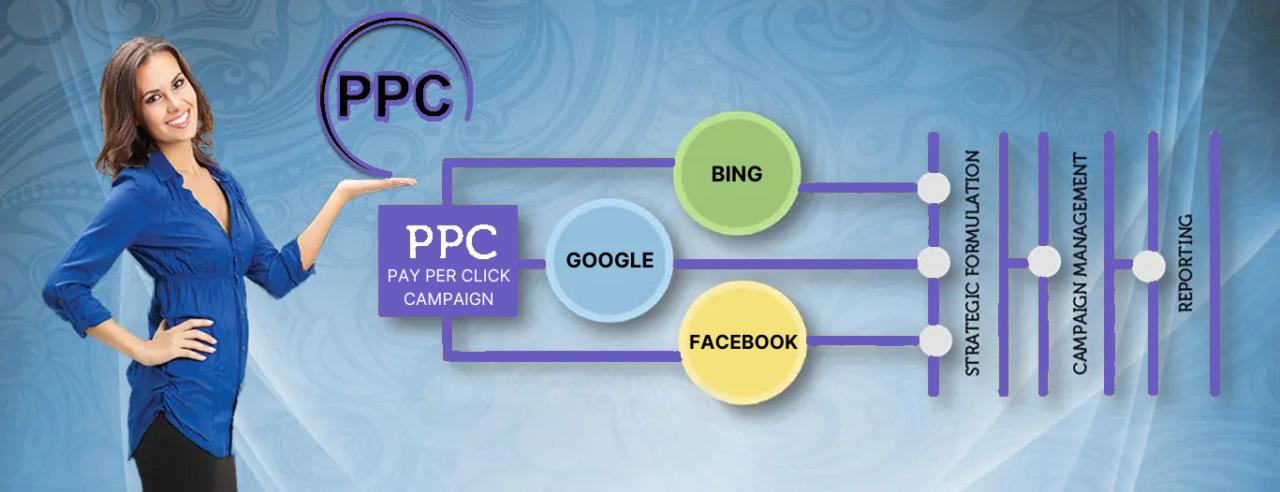
Crafting compelling ad copy and optimizing landing pages are crucial for effective PPC lead generation. A well-structured campaign combines persuasive ad language with a user-friendly landing page designed to convert visitors into leads. This synergy is essential for maximizing return on investment (ROI) in your PPC efforts.Effective PPC campaigns require a balance between attracting potential customers through enticing ad copy and guiding them seamlessly through a user-friendly landing page experience.
A poorly designed landing page can negate even the most persuasive ad copy, highlighting the interconnectedness of these two critical elements.
Compelling Ad Copy for Lead Generation
Strong ad copy is paramount for grabbing attention and driving traffic to your landing page. It needs to be concise, clear, and compelling, highlighting the unique value proposition of your offer. This concise messaging should resonate with your target audience, emphasizing the benefits they will gain from engaging with your brand.
- Highlight Value Proposition: Clearly articulate the benefits your product or service provides to the customer. Focus on solving a problem or fulfilling a need. Use strong verbs and benefit-driven language.
- Use s Strategically: Incorporate relevant s to improve ad visibility and relevance to search queries. Balance usage with natural language to avoid sounding robotic or spammy.
- Create Urgency and Scarcity: Employ techniques like limited-time offers or exclusive discounts to incentivize immediate action. This creates a sense of urgency and motivates the prospect to take action quickly.
Persuasive Calls to Action (CTAs)
Crafting compelling calls to action is essential for directing users to the desired next step. A well-designed CTA motivates users to take the desired action, such as filling out a form or making a purchase.
PPC lead generation is all about getting those valuable leads flowing. It’s a crucial part of any online marketing strategy, but sometimes you need a little extra oomph. That’s where strategies like blue checkmark marketing explained come in handy. By understanding how to use the blue checkmark effectively, you can really optimize your PPC campaigns for better conversions.
This in turn, significantly boosts the overall efficiency of your PPC lead generation efforts.
- Use Action-Oriented Language: CTAs should be direct and action-oriented, using verbs that encourage immediate action. Examples include “Learn More,” “Get a Free Quote,” or “Download Now.”
- Make CTAs Visually Prominent: Use contrasting colors and clear typography to ensure the CTA stands out on the ad and landing page. Place the CTA in a logical and easily visible location.
- Use Multiple CTAs: Test different CTAs to see which performs best. Use various types of CTAs for different user segments to personalize the experience and increase conversion rates.
Landing Page Optimization for Lead Capture
Landing pages are the destination of your ad campaigns. Optimizing these pages is crucial for converting visitors into leads. A well-designed landing page provides a seamless experience that guides the user toward the desired action.
- Focus on a Single Offer: Landing pages should focus on a single, clear message and offer. Avoid distractions to ensure the user understands the value proposition and takes the desired action.
- Simplify the Form: Reduce the number of fields in forms. Gather only the essential information needed to qualify leads. This significantly reduces friction and encourages users to complete the form.
- Optimize for Mobile Devices: Ensure your landing page displays correctly on all devices. A mobile-friendly experience is critical to reach a wider audience and improve user engagement.
Designing Effective Landing Pages for Lead Magnets
Lead magnets, such as ebooks or webinars, can attract leads and build your email list. Effective landing pages for lead magnets should be designed to entice users to exchange their contact information for valuable content.
- Clearly Present the Lead Magnet: Clearly describe the benefits of the lead magnet. Highlight its value to the user and make it easy for them to understand why they should exchange their information.
- Offer a Strong Value Proposition: Demonstrate how the lead magnet will address a specific need or solve a problem for the user. Focus on the benefits of acquiring the lead magnet.
- Use High-Quality Visuals: Use high-quality images and graphics to enhance the appeal of the landing page and lead magnet. Visuals contribute to a better user experience and improve brand perception.
Examples of Compelling Ad Copy and CTAs
| Ad Copy | CTA |
|---|---|
| “Unlock Your Business Potential with Our Expert Marketing Strategies. Learn More Today!” | “Get Started Now” |
| “Tired of Low Sales? Boost Your Conversions with Our Proven PPC Strategies. Limited-time offer!” | “Claim Your Free Consultation” |
| “Stop Wasting Money on Ineffective Ads. Discover Our Data-Driven PPC Solutions. Download our guide!” | “Download Now” |
Budget Allocation and Campaign Management
PPC campaigns thrive on careful budget allocation and effective management. A well-structured budget ensures optimal return on investment (ROI) and helps achieve lead generation goals. Proper campaign management tools and techniques are essential to monitor performance, identify areas for improvement, and make data-driven adjustments to maximize lead generation.Effective PPC budget management involves understanding campaign performance, adapting strategies, and leveraging data-driven decisions.
By meticulously tracking key metrics and analyzing campaign results, you can optimize your budget allocation to achieve the desired outcomes and generate high-quality leads.
Budget Allocation Strategies
Different allocation strategies cater to various business needs and goals. Understanding the optimal approach is crucial for maximizing lead generation from PPC campaigns. The right approach considers factors like campaign objectives, target audience, and competition. A well-defined strategy ensures that funds are allocated to campaigns that yield the highest potential for lead generation.
- Proportional Allocation: This strategy distributes the budget proportionally to the estimated potential of each campaign. For example, if Campaign A is expected to generate twice the leads of Campaign B, Campaign A receives twice the budget of Campaign B. This ensures resources are directed towards the most promising opportunities.
- Performance-Based Allocation: This strategy allocates budgets based on the past performance of each campaign. High-performing campaigns receive a larger portion of the budget, while underperforming campaigns receive a smaller share or are adjusted. This dynamic approach allows for continuous optimization based on real-time data.
- A/B Testing-Driven Allocation: This approach employs A/B testing to evaluate different budget allocations across various campaign elements, such as ad copy, landing pages, and s. The results from these tests inform future budget adjustments and resource allocation to maximize campaign effectiveness.
A/B Testing for Optimization
A/B testing is crucial for refining campaign performance. It involves running two versions of an element, such as ad copy or landing page, to determine which performs better. A/B testing is used to determine which ad copy, landing page, or other element generates the most leads. By testing different variations, businesses can refine their campaigns and achieve the most optimal results.
- Testing Ad Copy: Different versions of ad copy can be tested to see which resonates most effectively with the target audience and generates more clicks. The winning ad copy can then be used to maximize campaign performance.
- Optimizing Landing Pages: Testing various landing page designs, layouts, and calls to action (CTAs) allows you to determine which best converts visitors into leads. By focusing on the most effective landing pages, you can improve campaign performance and increase conversion rates.
- Testing: Testing different s can help determine which ones are most effective in attracting relevant traffic and generating leads. The results of these tests help identify the most effective s for lead generation.
Managing Multiple Campaigns
Managing multiple PPC campaigns requires a structured approach. Efficient tools and processes are vital for keeping track of various campaigns, budgets, and performance metrics. By implementing effective campaign management strategies, you can optimize lead generation efforts and gain a competitive edge.
- Campaign Tracking Tools: Utilizing campaign tracking tools provides insights into campaign performance, enabling businesses to monitor key metrics such as clicks, conversions, and cost per lead (CPL). This data allows for informed decision-making and resource allocation.
- Spreadsheet Management: Utilizing spreadsheets to track campaign data helps manage multiple campaigns, including budget allocation, performance metrics, and key performance indicators (KPIs). This centralized record keeps data organized and accessible.
- Reporting and Analysis: Regular reporting and analysis of campaign data are essential for identifying trends and patterns. These insights provide actionable information for optimizing budget allocation and campaign strategies.
Budget Adjustment Strategies
Campaign performance analysis enables data-driven budget adjustments. Monitoring key metrics such as conversion rates, click-through rates (CTRs), and cost-per-acquisition (CPA) allows for strategic adjustments to optimize campaign effectiveness. By closely tracking performance and making adjustments, you can maximize your ROI and ensure your budget is used efficiently.
- Performance-Based Adjustments: Campaigns exceeding expectations can receive budget increases, while underperforming campaigns can have their budgets reduced or reallocated. This dynamic approach allows for continuous optimization.
- Market Trends: Adjustments should consider market trends, competitor activity, and seasonality. For example, if a competitor launches a similar campaign, you might need to increase your budget to maintain market share.
- Seasonal Variations: Seasonal variations can influence campaign performance. Budgets may need to be adjusted accordingly to adapt to changes in demand and market activity.
Budget Allocation Models
| Model | Description | Suitability |
|---|---|---|
| Proportional | Distributes budget based on estimated campaign potential. | Suitable for campaigns with varying potential, when estimates are reasonably accurate. |
| Performance-Based | Allocates budget based on past campaign performance. | Suitable for campaigns with established track records, allowing for dynamic adjustments. |
| A/B Testing | Allocates budget for testing different campaign elements. | Suitable for continuous improvement, identifying optimal variations. |
Lead Nurturing and Post-Conversion Strategies: Ppc Lead Generation
A successful PPC campaign doesn’t end with a lead conversion. Nurturing those leads into paying customers is crucial for maximizing return on investment. This stage often determines the difference between a successful campaign and a missed opportunity. Effective lead nurturing strategies help build relationships and increase the likelihood of conversions.Post-conversion engagement, often overlooked, is a powerful tool for building customer loyalty and driving repeat business.
By actively engaging with leads after they’ve taken the desired action, you can further understand their needs, address their concerns, and ultimately turn them into satisfied customers.
Importance of Lead Nurturing After Conversion
Successfully converting a lead is just the first step. Lead nurturing after conversion is essential for building long-term relationships, fostering loyalty, and increasing the likelihood of repeat purchases. By providing valuable content and engaging with leads on a personal level, you can guide them through the customer journey and turn them into advocates for your brand.
Strategies for Engaging with Leads Post-Conversion
Various strategies can effectively engage leads post-conversion. Personalization is key. Tailored communication based on individual lead behavior and preferences shows genuine interest and builds trust. Sending thank-you notes, personalized product recommendations, or exclusive content relevant to their interests demonstrates value. Regular updates about product improvements, relevant industry news, and valuable content further engage them.
Automating Lead Nurturing Processes
Automating lead nurturing significantly enhances efficiency and scalability. Marketing automation tools allow for pre-programmed email sequences, triggered by specific actions or milestones. These automated sequences can guide leads through different stages of the customer journey, delivering personalized content and fostering engagement. Using tools to track interactions and segment leads based on their behavior further optimizes the process.
Methods for Segmenting Leads Based on Engagement
Segmenting leads based on their engagement levels is critical for personalized nurturing. Categorizing leads based on their website interactions, email opens, and purchase history helps tailor communications. Leads who actively engage with your content and promotions can be grouped differently than those who are less active. This targeted approach ensures that each lead receives the most relevant and valuable content, increasing engagement and conversion rates.
Lead Nurturing Email Sequence
Consistent and well-structured email sequences are vital for nurturing leads. The sequence should be tailored to the specific needs and interests of the target audience. Below is a sample email sequence designed for a software company.
| Email Number | Subject | Content |
|---|---|---|
| 1 | Welcome to [Company Name]! | A warm welcome email thanking the lead for their purchase and introducing the product. Includes links to helpful resources and FAQs. |
| 2 | Getting Started with [Product Name] | A detailed guide on how to utilize the product’s key features. Includes screenshots and video tutorials. |
| 3 | Unlocking [Product Name]’s Potential | Provides advanced tips and tricks to optimize the use of the product for maximum efficiency. |
| 4 | Community Spotlight | Introduces the company community and highlights user success stories. |
| 5 | Feedback Request | Invites the lead to share feedback on the product to help improve future versions. |
Tools and Platforms
PPC lead generation relies heavily on the right tools and platforms. Choosing the right tools is crucial for success, as they streamline your campaigns, analyze data effectively, and ultimately boost lead generation. This section will delve into popular PPC platforms, how to select the best fit for your business, and how to leverage analytics dashboards for optimal campaign performance.
Popular PPC Platforms
Selecting the correct PPC platform is a pivotal aspect of lead generation. Different platforms cater to various needs and budgets. Understanding their unique features and functionalities is key to maximizing your ROI.
- Google Ads (formerly Google AdWords): Google Ads remains the dominant player in the PPC market. Its comprehensive features, extensive targeting options, and robust analytics make it a powerful tool for generating leads. Its integrated data allows for meticulous campaign optimization and tracking. The platform’s versatility is well-suited for diverse businesses, and its large user base provides access to a vast audience.
- Microsoft Ads (formerly Bing Ads): Microsoft Ads provides a valuable alternative to Google Ads. It offers a different audience reach, sometimes at a lower cost per click. Targeting capabilities are robust, and its integration with other Microsoft products can be advantageous for businesses using those tools. Businesses with existing Microsoft marketing infrastructure often find this a suitable choice.
- Social Media Ads (Facebook Ads, Instagram Ads, LinkedIn Ads): Social media platforms offer specialized PPC options that target specific demographics and interests. Facebook Ads, for example, provide powerful targeting based on user profiles and behaviors, while LinkedIn Ads are ideal for B2B lead generation. These platforms provide unique opportunities for reaching niche audiences.
- Retargeting Platforms (e.g., Criteo, AdRoll): Retargeting platforms focus on re-engaging users who have previously interacted with your website or brand. They help convert those prospects into customers. This strategy is vital for increasing conversions from existing leads.
Selecting the Right Tools
Choosing the right PPC tools depends on your specific business requirements. Consider factors such as your budget, target audience, industry, and desired outcomes. A detailed analysis of these elements will guide you toward the most effective solutions.
- Budget constraints: Platforms like Google Ads and Microsoft Ads offer various pricing models. Evaluate the cost-per-click (CPC) and cost-per-thousand impressions (CPM) to ensure alignment with your budget. A platform’s affordability can significantly influence its suitability.
- Target audience: If your target audience is predominantly on a specific platform (e.g., LinkedIn for B2B), that platform should be prioritized. Platforms like Google Ads are versatile but may not be as effective as niche-specific platforms.
- Desired outcomes: Define clear objectives. Are you aiming for brand awareness, lead generation, or direct sales? Select tools that align with these objectives and provide the necessary tracking and reporting features.
Comparing PPC Platforms
A comparative analysis of various PPC platforms reveals key differences in features and capabilities. This allows for informed decision-making regarding your specific needs.
| Platform | Key Features |
|---|---|
| Google Ads | Extensive targeting options, robust analytics, versatile campaign types, integrated data analysis |
| Microsoft Ads | Competitive pricing, potentially lower CPC, unique audience targeting, integration with Microsoft products |
| Facebook Ads | Highly granular targeting based on user demographics and behaviors, cost-effective for reaching niche audiences |
| LinkedIn Ads | Ideal for B2B lead generation, professional networking focus, strong targeting based on job titles and industry |
Analytics Dashboards
Effective PPC campaigns require constant monitoring and analysis. Analytics dashboards provide crucial insights into campaign performance, enabling adjustments for optimization.
“Data-driven decision-making is critical for successful PPC campaigns.”
Regularly reviewing key metrics, such as click-through rates (CTR), conversion rates, and cost-per-acquisition (CPA), is essential. These metrics provide a clear understanding of campaign effectiveness and areas needing improvement. Implementing these insights is critical for campaign success.
Case Studies and Examples
PPC lead generation isn’t just about theory; it’s about seeing real results in the real world. Successful campaigns demonstrate the power of targeted advertising, compelling copy, and meticulous optimization. This section delves into specific case studies to illustrate how different industries leverage PPC to achieve their lead generation goals.Looking at successful campaigns provides valuable insights. These case studies aren’t just about the final numbers; they highlight the strategies, choices, and adjustments that led to success.
Analyzing these case studies can equip you with the knowledge to design and implement effective campaigns of your own.
Real-World PPC Lead Generation Success Stories
Effective PPC campaigns go beyond simple ad creation; they require deep understanding of the target audience, meticulous tracking, and continuous optimization. Success often stems from a combination of factors that are carefully crafted and refined over time.
- E-commerce Company: An online retailer used PPC to target specific demographics interested in high-end electronics. They utilized highly targeted s and created landing pages that were specifically designed for those users. The campaign focused on driving traffic to product pages with compelling visuals and concise product descriptions. The result was a 30% increase in leads and a 25% boost in conversion rates.
- Software as a Service (SaaS) Company: A SaaS company targeting small businesses used PPC to showcase the value proposition of their cloud-based accounting software. Their campaign featured clear calls to action and showcased the software’s key features in short, impactful videos. They tracked user engagement on the landing page and adjusted their ad copy to reflect user behavior. The campaign generated a 40% increase in qualified leads and a 15% rise in trial sign-ups.
- Professional Services Firm: A law firm specialized in intellectual property law used PPC to target businesses seeking legal counsel on patent filings. They created highly specific landing pages outlining their expertise in patent litigation. The firm employed a strong call to action that emphasized the quick turnaround time and transparent pricing. The result was a 20% increase in consultations booked.
Industry-Specific PPC Strategies
Different industries have unique challenges and opportunities when it comes to PPC lead generation. Understanding these differences allows for more effective targeting and campaign design.
- Healthcare: PPC campaigns for healthcare providers need to comply with strict regulations. Campaigns should focus on providing information and resources that align with industry standards and ethical guidelines. Accurate and up-to-date information is critical, especially when dealing with health-related concerns.
- Real Estate: Real estate agents can use PPC to target potential buyers and sellers. This involves highlighting key features and benefits of specific properties. Strong visuals and detailed property descriptions are key to success.
- Financial Services: Financial institutions use PPC to attract clients seeking investment opportunities or financial advice. Transparency and trust are crucial in these campaigns. Emphasis should be placed on clear communication and accurate representation of services.
Comparative Analysis of Case Studies
This table summarizes the key aspects of the discussed case studies, highlighting the strategies employed and the results achieved.
| Case Study | Industry | Key Strategy | Results |
|---|---|---|---|
| E-commerce | Retail | Targeted demographics, optimized landing pages | 30% increase in leads, 25% conversion rate boost |
| SaaS | Software | Value proposition, clear calls to action, user engagement tracking | 40% increase in qualified leads, 15% rise in trial sign-ups |
| Professional Services | Law | Specific target audience, expertise emphasis, clear call to action | 20% increase in consultations booked |
Final Thoughts
In conclusion, effective PPC lead generation hinges on a multifaceted approach that considers targeting, ad copy, landing pages, and meticulous campaign management. By mastering these elements and continuously optimizing your strategy, you can leverage paid advertising to generate high-quality leads and ultimately boost your business growth. Remember that consistent tracking, adaptation, and a well-defined lead nurturing plan are key to maximizing your ROI.
